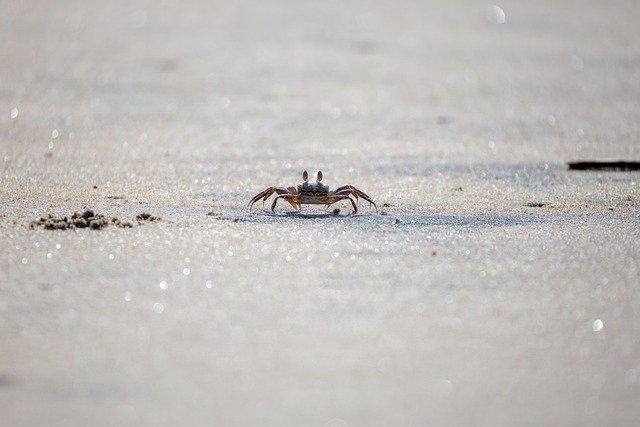Exploring the Hidden World of Hermit Crab Societies
In the realm of crustaceans, hermit crabs stand out as fascinating creatures with complex social structures and behaviors. These remarkable animals, often overlooked as simple beach-dwelling scavengers, actually lead rich lives filled with intricate social interactions, hierarchies, and even forms of communication. This article delves into the captivating world of hermit crab societies, uncovering the secrets of their communal living and shedding light on their importance in marine ecosystems.

One of the most fascinating aspects of hermit crab societies is their shell exchange rituals. As hermit crabs grow, they require larger shells to protect their soft abdomens. Rather than simply abandoning their old shells and searching for new ones individually, hermit crabs have developed a sophisticated system of shell swapping. When a crab finds a shell that’s too large for its current size, it will often wait nearby, attracting other crabs to form a vacancy chain. This process can involve multiple crabs, each moving up to a slightly larger shell, in a remarkable display of coordination and resource sharing.
Communication and Hierarchy in Hermit Crab Communities
While hermit crabs lack the vocal abilities of many other animals, they have developed alternative methods of communication. Researchers have observed that hermit crabs use a combination of chemical signals, touch, and visual cues to interact with one another. For example, when two hermit crabs meet, they often engage in a behavior known as antennae fencing, where they gently tap each other’s antennae to exchange information about size, species, and potentially even individual identity.
Hermit crab societies also exhibit clear hierarchical structures. Larger, more dominant crabs often have access to the best shells and prime feeding locations within the colony. These hierarchies are not static, however, and can shift based on factors such as molting cycles, shell availability, and individual crab health. The dynamic nature of these social structures highlights the complexity of hermit crab interactions and decision-making processes.
The Role of Hermit Crabs in Marine Ecosystems
Beyond their fascinating social lives, hermit crabs play crucial roles in marine and coastal ecosystems. As scavengers, they help to clean up organic matter on beaches and in shallow waters, contributing to nutrient cycling and maintaining the health of their habitats. Additionally, the shells that hermit crabs inhabit often become miniature ecosystems in themselves, hosting a variety of smaller organisms such as algae, barnacles, and even tiny fish.
Hermit crabs are also important prey species for many larger animals, including birds, fish, and octopuses. Their presence in an ecosystem can be an indicator of overall environmental health, making them valuable subjects for conservation research and monitoring efforts.
Conservation Challenges and Human Impact
Despite their ecological importance and remarkable social behaviors, many hermit crab species face significant threats due to human activities. Coastal development, pollution, and climate change all pose risks to hermit crab populations worldwide. One particularly concerning issue is the impact of plastic pollution on hermit crab habitats. As plastic waste accumulates on beaches, hermit crabs may mistake it for suitable shell material, leading to entrapment and death.
Conservation efforts focused on hermit crabs often emphasize the protection of coastal habitats and the reduction of plastic pollution. Some initiatives also involve the creation of artificial shells to supplement natural shell availability in areas where human collection or environmental changes have reduced the number of suitable shells for hermit crabs to inhabit.
The Future of Hermit Crab Research and Conservation
As our understanding of hermit crab societies grows, so too does our appreciation for these remarkable creatures. Ongoing research continues to uncover new aspects of hermit crab behavior, cognition, and ecological importance. Some scientists are exploring the potential for hermit crabs to serve as model organisms for studying the evolution of social behavior in invertebrates, while others are investigating their potential as indicators of ecosystem health in the face of climate change.
The study of hermit crab societies not only enriches our understanding of marine ecology but also challenges our perceptions of invertebrate intelligence and social complexity. As we continue to unravel the mysteries of these fascinating creatures, it becomes increasingly clear that the hidden world of hermit crabs is one of intricate relationships, sophisticated behaviors, and vital ecological roles. By appreciating and protecting these unique animals, we contribute to the preservation of the delicate balance of life in our coastal and marine environments.






